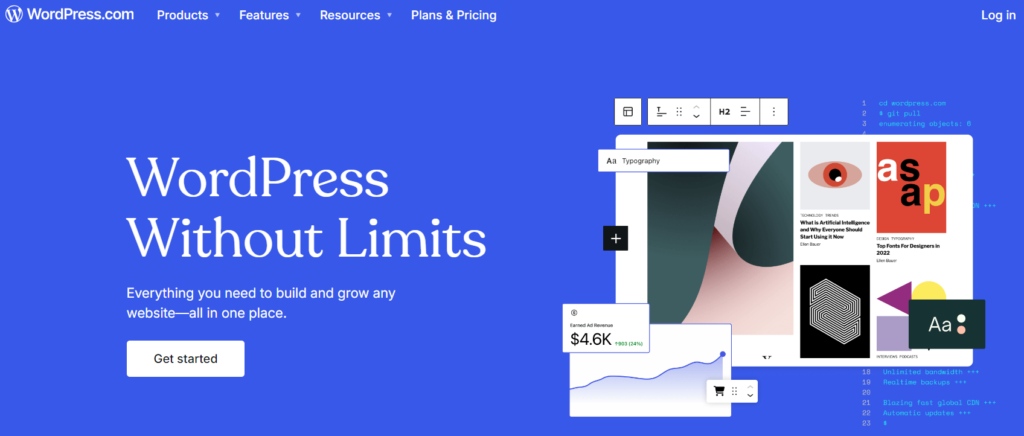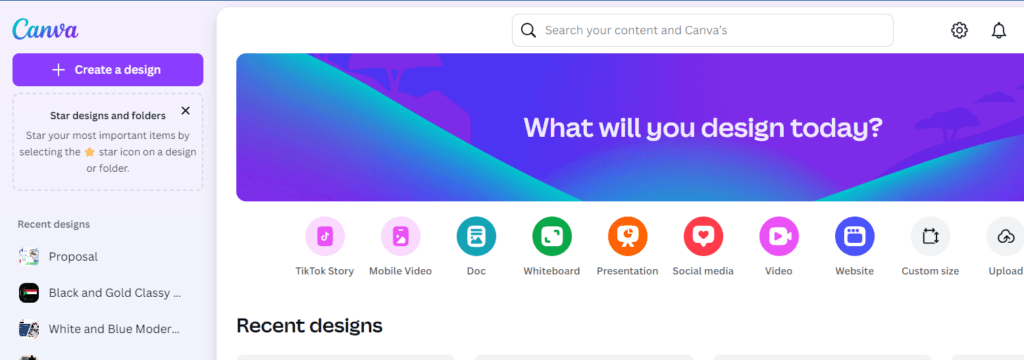6 Free Tools for Web Design : In today’s digital age, having a well-designed website is essential for businesses, freelancers, and anyone looking to establish an online presence. However, not everyone has the budget to hire professional designers or purchase expensive software. Luckily, there are many free tools available that can help you create beautiful, functional websites without breaking the bank.
These free web design tools offer powerful features that allow you to design, prototype, and even launch websites, all without spending a dime. Let’s dive into six of the best free tools for web design, perfect for beginners and professionals alike.
What to Look for in Web Design Tools
Before choosing the right tools, it’s important to know what makes a web design tool effective. Here are some key features to consider:
- User-friendliness: The tool should have an intuitive interface that’s easy to navigate.
- Customization options: Flexibility in design elements allows for creativity.
- Responsiveness: Websites need to look great on all devices, from desktop to mobile.
- Integration with other platforms: A good tool will work seamlessly with other services, such as CMS platforms or e-commerce solutions.
Now, let’s explore the six free tools that will help you elevate your web design game.
1. Figma: Collaborative Web Design and Prototyping
Figma has rapidly become a favorite tool among web designers, especially for those working in teams. It’s a cloud-based design tool that allows you to create and prototype websites in real-time collaboration with other designers, developers, or clients.
- Key Features: Figma offers a vast range of design tools, from vector editing to wireframing. It supports live collaboration, making it perfect for team projects.
- Why It’s Great for Web Designers: It’s intuitive and provides an environment where feedback can be incorporated instantly.
- Collaboration Tools: With Figma, you can share your designs with team members and clients to receive real-time input, streamlining the design process.
2. WordPress: The Free CMS for Website Creation
WordPress is the world’s most popular content management system (CMS), powering more than 40% of websites globally. It offers a free, flexible platform that enables you to design full websites without needing to know how to code.

- Flexibility: WordPress allows for extensive customization through themes and plugins, making it ideal for any type of website—blogs, portfolios, e-commerce sites, and more.
- Pros for Designers: WordPress has thousands of free themes that you can modify to fit your needs, and its drag-and-drop editors, like Elementor, make design even easier.
3. Canva: A Simple Tool for Visual Elements
Canva is a fantastic online tool for creating graphics and visual content, and it’s especially useful for web designers who need quick and easy visuals.

- Design Templates: Canva provides pre-made design templates that can be customized for various web elements such as banners, buttons, and icons.
- Drag-and-Drop Functionality: Its drag-and-drop interface makes creating visuals a breeze, even if you have no prior design experience.
- Use Case: Canva is perfect for designing social media graphics, web banners, or adding professional visual elements to your site.
4. Webflow: Design and Development Without Code
Webflow is a powerful web design tool that lets you design, build, and launch responsive websites visually—without writing any code.
- Visual Design: You can build beautiful websites using its intuitive drag-and-drop interface.
- Free Plan: Webflow offers a free plan that allows you to start designing without any upfront costs. However, to connect a custom domain or launch, a paid plan is needed.
- Benefits for Designers: Webflow allows you to focus on design while it automatically generates clean HTML, CSS, and JavaScript for you.
5. GIMP: Free Image Editing for Designers
GIMP (GNU Image Manipulation Program) is a free, open-source alternative to Adobe Photoshop, and it’s packed with powerful image editing features.
- Capabilities: GIMP offers many of the same features as Photoshop, such as layers, masks, filters, and advanced editing tools.
- Great for Web Design: It’s perfect for web designers who need to create or edit images, icons, or graphics without paying for premium software.
- Comparison to Paid Alternatives: While Photoshop has some advanced features, GIMP is an excellent alternative for designers on a budget.
6. Google Fonts: Free Typography for Web Design
Typography is a crucial element of web design, and Google Fonts offers a vast library of free fonts that you can use on your websites.
- Wide Variety of Fonts: With hundreds of free fonts to choose from, Google Fonts ensures that your website typography stands out.
- Integration: It’s easy to embed Google Fonts into your site by adding a simple line of code or linking directly from the platform.
- Why It Matters: Great typography improves readability and enhances your site’s overall aesthetic.
Bonus: Unsplash – Free Stock Images for Stunning Websites
No website is complete without high-quality images, and Unsplash offers a vast collection of royalty-free images that can be used on any project.
- Free Stock Images: Whether you’re creating a blog, portfolio, or e-commerce site, Unsplash provides professional-grade photos for free.
- Why It’s Essential: High-quality imagery can elevate your web design and make your site more visually engaging.
Benefits of Using Free Tools in Web Design
Free tools have come a long way and are no longer seen as inferior to paid software. Here are some benefits of using these tools:
- Cost Savings: Especially for freelancers and small businesses, free tools allow you to create stunning websites without large upfront costs.
- No Loss in Quality: Many free tools, like Figma and WordPress, offer professional-grade features.
- Build Your Portfolio: Free tools are a great way to build your design portfolio and experiment with different styles and techniques.
Limitations of Free Tools
Of course, free tools aren’t without their limitations. Some common challenges include:
- Locked Features: Premium features or larger storage space may require payment.
- Usage Restrictions: Free plans often come with limited functionality.
- Learning Curves: Some free tools, like GIMP, can have a steep learning curve.
How to Combine These Tools for Best Results
To get the most out of these free tools, consider integrating them into a streamlined workflow. For example:
- Figma + Webflow: Design your prototypes in Figma and then build the site in Webflow.
- WordPress + Google Fonts: Use WordPress as your CMS while customizing your site with Google Fonts for unique typography.
Tips for Getting the Most Out of Free Tools for web design
- Join Communities: Participate in user forums and communities to learn tips and tricks.
- Utilize Free Resources: Many tools offer free tutorials, templates, and guides to help you get started.
- Experiment: Don’t be afraid to test different features and push the boundaries of what these free tools can do.
Conclusion
Web design no longer has to come with a hefty price tag. The six free tools we’ve covered—Figma, WordPress, Canva, Webflow, GIMP, and Google Fonts—offer professional-level capabilities that are perfect for anyone looking to create or improve a website. With a little practice and creativity, these tools can help you design stunning websites without spending a dime. Contact us for Free Website Design
FAQs
- Can I design professional websites using only free tools? Absolutely! Many professional web designers use free tools to create high-quality websites.
- How do free tools compare to premium software? While premium tools may offer more features, free tools provide plenty of functionality for most design projects.
- Which tool is best for beginners in web design? Canva and WordPress are both excellent choices for beginners due to their user-friendly interfaces.
- Is Webflow really free? Webflow offers a free plan, but to fully launch and customize a website, you’ll need to upgrade to a paid plan.
- What’s the catch with free design tools? Some free tools may have limitations, such as watermarks or restricted access to premium features, but most offer enough to complete basic to intermediate projects.
